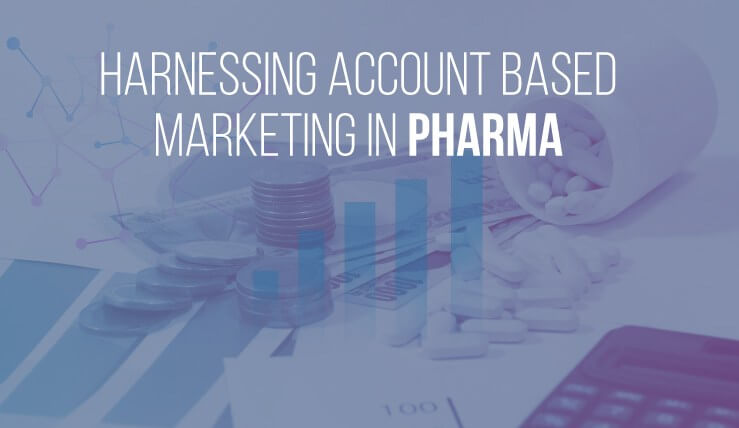Marketing to the Pharma Sector can be quite challenging in today’s environment. Unlike normal B2B structures, these huge targets are comprised of some of the largest most profitable brands in the world, operating in arguably the most regulated sector imaginable. If this is not intimidating enough, some of these individual companies are comprised of over 100 brand teams all-focusing individually on one product or disease state.
With this framework, you might find yourself asking, “how do I demonstrate my company’s value to all of these teams? How do I collectively build content that will resonate with someone operating within Multiple Sclerosis, and Plaque Psoriasis?” The answer isn’t simple; in fact there likely isn’t a clear answer at all. Within the Pharmaceutical Sector, teams are very siloed in their disease state or brand (whether manufacturing or medical), so much to the point where data residing in separate areas can be erroneous and irrelevant. In the research sector, this is exhibited clearly. Each team has different goals and objectives which they anticipate accomplishing with their (sometimes) limited budgets, on an annual basis. Primarily, these individuals seek to maximize the volume of insights they can capture during a year, while maintaining a certain level of quality and credibility for their team.
Effectively marketing in this sector can be difficult, especially with a small team and limited resources. Prioritizing campaigns based on broad targeting metrics is arduous, precisely while maintaining digestible content applicable to various audiences. In these particular instances, I have found that Account-Based Marketing structures can help individuals effectively demonstrate value to their clients in an extremely targeted manner. In essence, ABM is a formulated marketing strategy focusing on individual prospects, accounts, or teams, seeking to connect with the key stakeholders within.
The reason this methodology is so effective in pharma strictly has to do with relevance. Having the ability to target teams with extremely specific content pertaining to their speciality within the medical world is largely advantageous. Someone operating within oncology is much more likely to engage with content pertaining to Breast Cancer, as opposed to Irritable Bowel Syndrome. In turn, targeted content is appreciated at a high level by the recipient; it will improve the delivery of your campaigns, grow rapport with your clients in a data aspect, and boost engagement through pertinent content. Even to you or I, this is prevalent in our own inboxes when selecting to read emails that interest us most.
Enough about the benefits of ABM though, let us dive into the top 6 steps to effectively harnessing Account-Based Marketing within the Pharmaceutical sector.
1. Teamwork Within Target Accounts
The number one necessity in building an effective strategy is to harness the power and expertise of your business development team. Leveraging their level of personal understanding is pertinent in developing a sound strategy within both targeting and data development, while learning from their experiences (good and bad) is a necessity in fine-tuning your content engine. I like to meet with my team on a monthly basis at the very least, to ensure my content curation is properly time-allocated to maximize the sales support. This process should be heavily collaborative with both marketing and sales teams, to identify the best course of action depending on your targeting structure. In this stage, you want to look for the top targets for your team’s core business – generally the high-value accounts with the highest profit margins and potential. Teams that you have successfully worked with in the past take yet another priority, especially if you delivered successfully.
2. Identify Decision Makers + Influencers
Once your key targets are on the radar, it is important to learn more about how they are structured within a hierarchy. In many cases, the decision makers will be the core focus in this stage. Particularly within pharma, the decision making power resides at the top, while the lower priority targets have less influencing power. In some cases however, you must determine which department has the final say. We commonly see the Market Research directors in charge of the syndicated budget; however have conclusively realized the marketing departments have a portion of power as well. It will vary by brand, but knowing this information is vital in constructing specific content, and ensuring its successful engagement. While the marketing teams may be focusing on developing actionable campaigns off their gathered insights, the researchers commonly have alternative goals. Remember, your BD team will recognize the structure here, and will help you develop your plan of attack regardless of which departments your team works with.
3. Content Creation and Personalization
After you have sufficiently identified target brands or teams, it is time to start collaborating on content to deliver. The majority of this content will be based off the target’s goals, another facet of important information from business development. It is vital here to find unique ways to position content, specifically to address the needs and challenges of your targets. Here, you want to focus on the definitive disease state or medical condition of the brand(s) you are targeting. While developing content, you want to focus solely on the most compelling takeaways, while specifically tailoring it to your individual targets. Through this natural process, you will be able to duplicate similar instances of applying this “adhesive” content to parallel targets, strategically taking advantage of your highly targeted data across definitive specialties.
4. Formulate Channels and Prepare Delivery
After you have sufficiently loaded your content arsenal, it is time to format your deliverables for strategic implementation. Focus here on the main channels where you engage with your targets, and use alternative methods to your advantage. At this stage, I like to build specifically tailored one-off landing pages for brand teams to arrive at after they have successfully engaged. The extreme levels of pinpointed relevance will dually build rapport with your decision maker, and ensure higher delivery of your content. With high-yielding potential opportunities, always take an extra step in preparation by maximizing your content on all available channels, and all mobile platforms. Supply your team with the same content, and get as much feedback as possible – keep in mind versatility is very important here.
5. Launch, and Follow Up
Finally, we are able to capitalize on all of our hard work and start launching our targeted campaigns. Make sure that the time is taken to prepare proper delivery of all content, and all channels are being tracked accordingly. It is important here to align your messaging strategy across all channels, as you do not want to create any informational disconnects for your audience. Also, make sure your whole team has the content at their disposal for any future business needs, as well as the targeted schema for monitoring effectiveness over time.
6. Track, Rinse, and Repeat
If you are as KPI (key performance indicator) hungry as I am, you want to make sure you track every potential action possible. Every tidbit of information here is vital in the everlasting mission to constantly improve ROI. Calculating your return on Investment here is equally as important in determining which channels and content delivery types you will choose moving forward. Remember, there is a lot of teamwork required to successfully deploy targeted content, and follow up on its success.
While this process may take longer than typical outbound marketing campaigns, it is advantageous for companies in the B2B sector marketing to large organizations. With the vast array of teams operating under the pharmaceutical umbrella, this is just another unique way to leverage your proprietary data in a highly targeted fashion.

